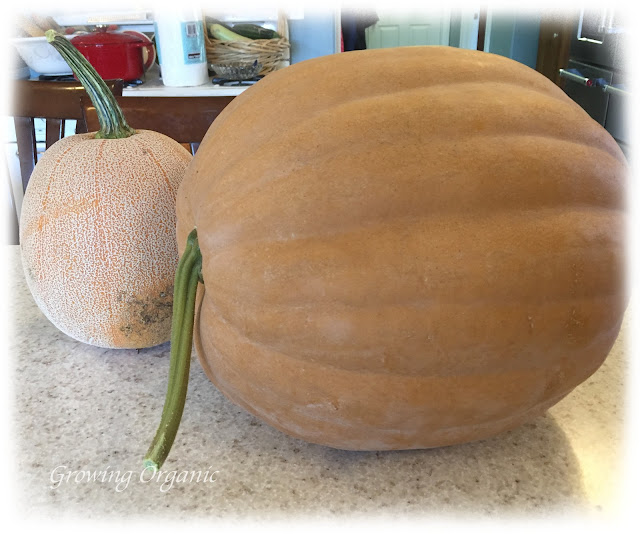| Old Mother Stollard an heirloom dried bean |
It all begins with a seed, some soil, and a vision of a healthy, bountiful harvest. What is the difference between open- pollinated, heirlooms, hybrids, and GMO seeds? What is best for the backyard gardener?
"Bad seed is a robbery of the worst kind: for your pocket-book not only suffers by it, but your preparations are lost and a season passes away unimproved."
George Washington
| Plant a seed; reap the harvest! |
Types of Seed
Open-pollinated seeds (OP) are pollinated by wind or insects or self pollinated. If you save seeds from OP plants the seeds will produce a plant that will yield fruits true to the type you obtained the seeds from. All heirlooms (H) are open-pollinated, but not all open pollinated plants are heirlooms.
 |
| Alcosa savoy cabbage a favorite hybrid I grow. |
An heirloom (H) is
an open-pollinated variety with a history.
They are generally a variety that is 40-50 years old that has been
preserved and kept true to a particular region.
They have a beloved history and unusual shapes, colors, and
flavors. Seed saver organization and
gardeners have kept heirlooms alive. If
you grow Brandywine tomatoes and save seeds from the best tasting, earliest
ripening plants year after year, you would have a locally adapted strain of
Brandywine different from other seed saver in other parts of the country.
 |
| Yugoslavian Butterhead lettuce Heirloom from a peasant family in Marburg, Yugoslavia (now Slovenia). Introduced 1987 |
Hybrids F1 are a cross between two different parent plants. They are
pollinated manually. The resulting fruit
has characteristics of both parents. To
continue to get that variety you must cross the original two parents;
therefore, you cannot save seeds from hybrids.
The seeds will not be true to type and generally only first generation
hybrids are vigorous, healthy plants.
GMO’s are genetically modified
organisms. The DNA of the plant is
modified by engineers for certain characteristics. For example, certain plants
are modified to tolerant roundup so fields can be sprayed without killing the
desired crop. GMO seed is very common in corn, rice, and soybeans. There are health concerns about GMO seeds and
they are banned in some countries.
So what is
the best type of seed for the backyard gardener? There is a place in my garden for heirlooms, hybrids, and open-
pollinated varieties. If you can grow it and you like to eat it,
then stick with it. I love trying
new varieties along with family favorites.
Hybrids can be vigorous and can have some resistance to specific diseases which is an added bonus if you have those diseases in your areas.
Heirlooms with their stories and histories are always interesting to me. They often offer more color, shapes, textures, and flavors especially in tomatoes. If saving seeds is your goal they are perfect because the seed grows true to type. Only save seed from plants that grew well. Heirlooms can be specific to certain regions making certain heirlooms difficult to grow in your area.
If you are saving seeds make sure it is from
an open pollinated or heirloom variety.
The easiest seeds to save are from tomatoes, beans, peas, peppers and
lettuce. They are self-pollinating with
less risk of cross pollination.
Seeds should be stored in a cool,
dark, and dry environment. Start with good quality
seeds. Cheap, old seeds have poor
germination rates. For best germination
rates, replace seeds every 3 to 4 years.
I replace seeds every 4 year. Onion and parsnip seeds should be replaced every year.
Ready,
Set, Plant!
When Soil Temperatures
are between 45-75 its time to plant cool
season crops.


No comments:
Post a Comment